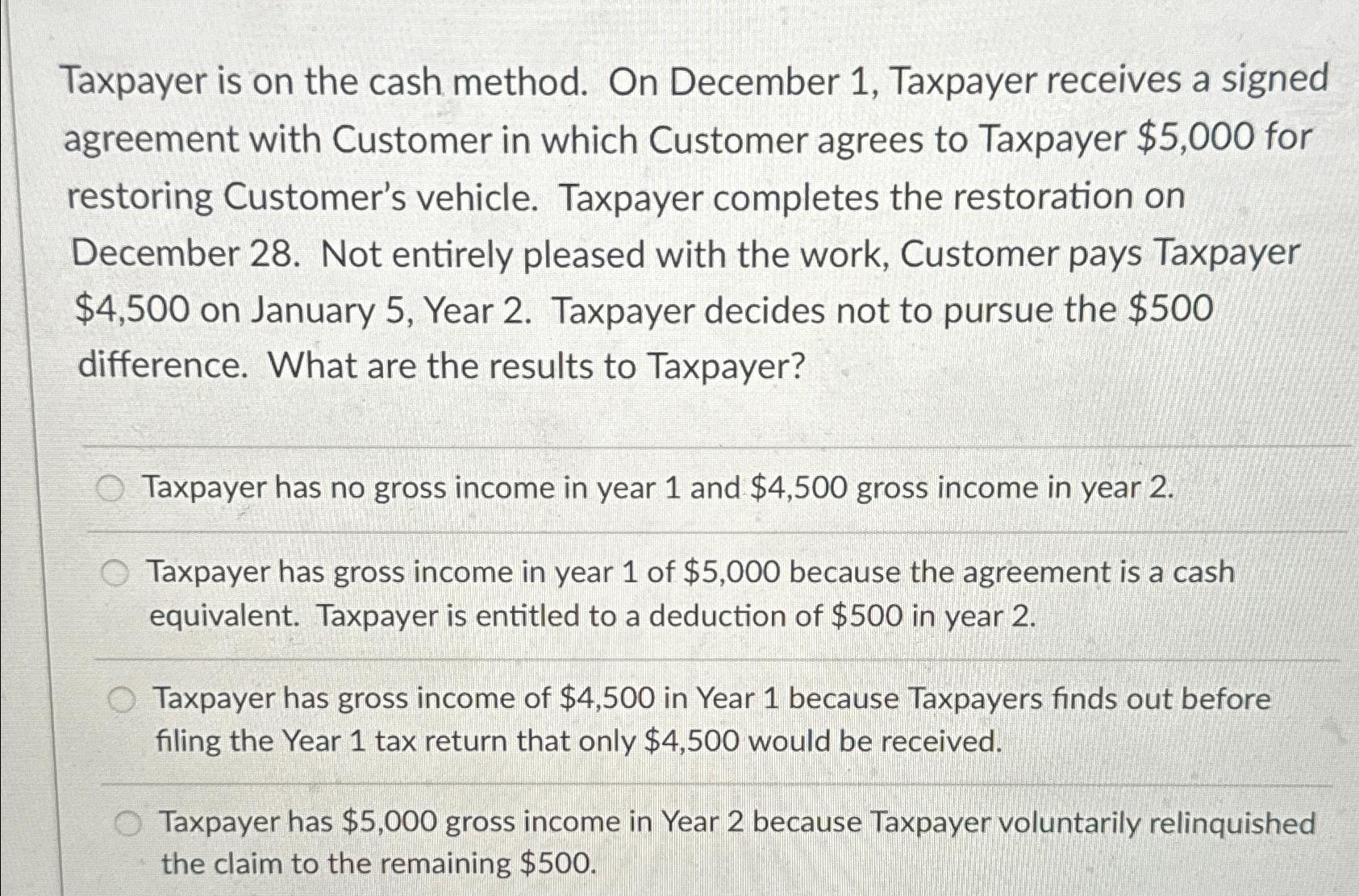Answered step by step
Verified Expert Solution
Question
1 Approved Answer
Taxpayer is on the cash method. On December 1 , Taxpayer receives a signed agreement with Customer in which Customer agrees to Taxpayer $ 5
Taxpayer is on the cash method. On December Taxpayer receives a signed agreement with Customer in which Customer agrees to Taxpayer $ for restoring Customer's vehicle. Taxpayer completes the restoration on December Not entirely pleased with the work, Customer pays Taxpayer $ on January Year Taxpayer decides not to pursue the $ difference. What are the results to Taxpayer?
Taxpayer has no gross income in year and $ gross income in year
Taxpayer has gross income in year of $ because the agreement is a cash equivalent. Taxpayer is entitled to a deduction of $ in year
Taxpayer has gross income of $ in Year because Taxpayers finds out before filing the Year tax return that only $ would be received.
Taxpayer has $ gross income in Year because Taxpayer voluntarily relinquished the claim to the remaining $

Step by Step Solution
There are 3 Steps involved in it
Step: 1

Get Instant Access to Expert-Tailored Solutions
See step-by-step solutions with expert insights and AI powered tools for academic success
Step: 2

Step: 3

Ace Your Homework with AI
Get the answers you need in no time with our AI-driven, step-by-step assistance
Get Started


